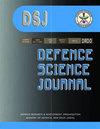FlexRay时钟同步算法的形式化建模与验证
IF 0.8
4区 工程技术
Q3 MULTIDISCIPLINARY SCIENCES
引用次数: 0
摘要
由于FlexRay这样的车载网络(IVN),汽车系统中使用的数百个电子控制设备可以有效地相互通信。尽管网络中的每个节点都将在其本地时钟上运行,但全局时间概念是必不可少的。时钟同步算法实现了FlexRay中节点之间的全局时间。在这个自动驾驶汽车的时代,汽车的安全至关重要。为了使车辆安全平稳地运行,及时的信息交流至关重要,时钟同步算法在这方面发挥着至关重要的作用。必须正式测试时钟同步算法的正确性。本文试图使用形式化方法对FlexRay的时钟同步算法进行建模和验证,从而提高安全关键汽车系统的可靠性。在UPPAAL模型检查器中,时钟同步被建模为六个时间自动机的网络。开发了三个系统模型,一个是理想时钟模型,另一个是漂移时钟模型,第三个是考虑传播延迟的模型。时钟的精度经验证在规定的限度内。还对该模型进行了仿真研究,以确保时钟的漂移始终在精度范围内。本文章由计算机程序翻译,如有差异,请以英文原文为准。
Formal Modelling and Verification of the Clock Synchronization Algorithm of FlexRay
The hundreds of electronic control devices used in an automotive system can effectively communicate with one another, thanks to an in-vehicle network (IVN) like FlexRay. Even though every node in the network will be running on its local clock, a global notion of time is essential. The clock synchronisation algorithm accomplishes this global time between the nodes in FlexRay. In this era of self-driving cars, the vehicle’s safety is paramount. For the vehicle to operate safely and smoothly, timely communication of information is critical, and the clock synchronisation algorithm plays a vital role in this. It is essential to formally test the clock synchronisation algorithm’s correctness. This paper attempts to model and verify the clock synchronisation algorithm of FlexRay using formal methods, which in turn enhance the reliability of safety-critical automotive systems. The clock synchronisation is modelled as a network of six timed automata in the UPPAAL model checker. Three system models were developed, a model for an ideal clock, another for a drifting clock, and a third model considering propagation delay. The precision of the clocks is verified to be within the prescribed limits. Simulation studies are also conducted on the model to ensure that the clock’s drift is always within the precision.
求助全文
通过发布文献求助,成功后即可免费获取论文全文。
去求助
来源期刊

Defence Science Journal
综合性期刊-综合性期刊
CiteScore
1.80
自引率
11.10%
发文量
69
审稿时长
7.5 months
期刊介绍:
Defence Science Journal is a peer-reviewed, multidisciplinary research journal in the area of defence science and technology. Journal feature recent progresses made in the field of defence/military support system and new findings/breakthroughs, etc. Major subject fields covered include: aeronautics, armaments, combat vehicles and engineering, biomedical sciences, computer sciences, electronics, material sciences, missiles, naval systems, etc.
 求助内容:
求助内容: 应助结果提醒方式:
应助结果提醒方式:


